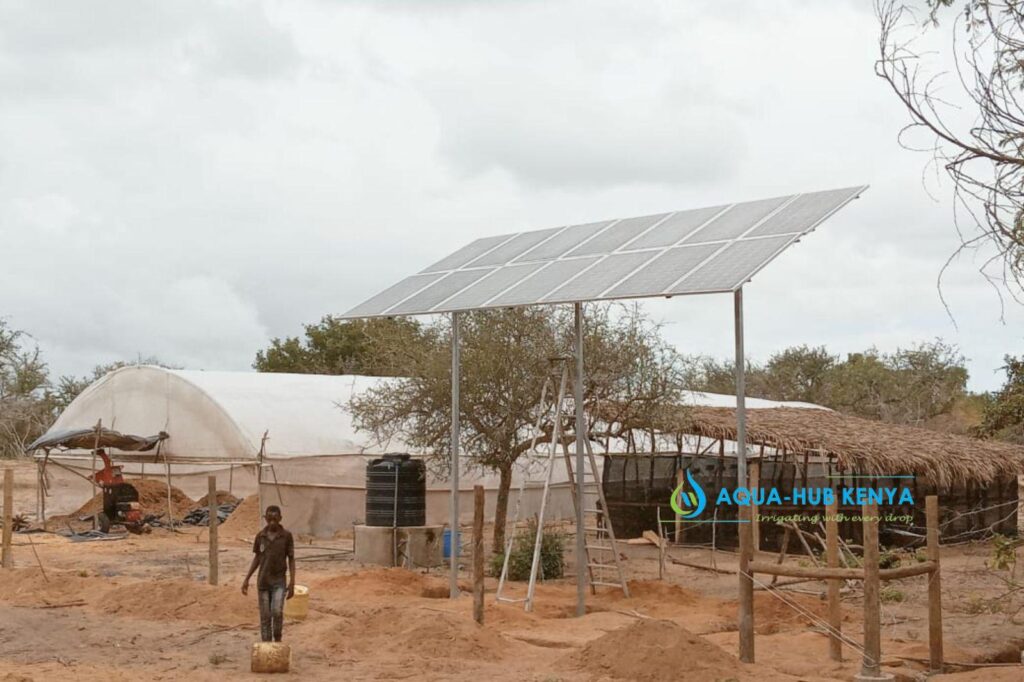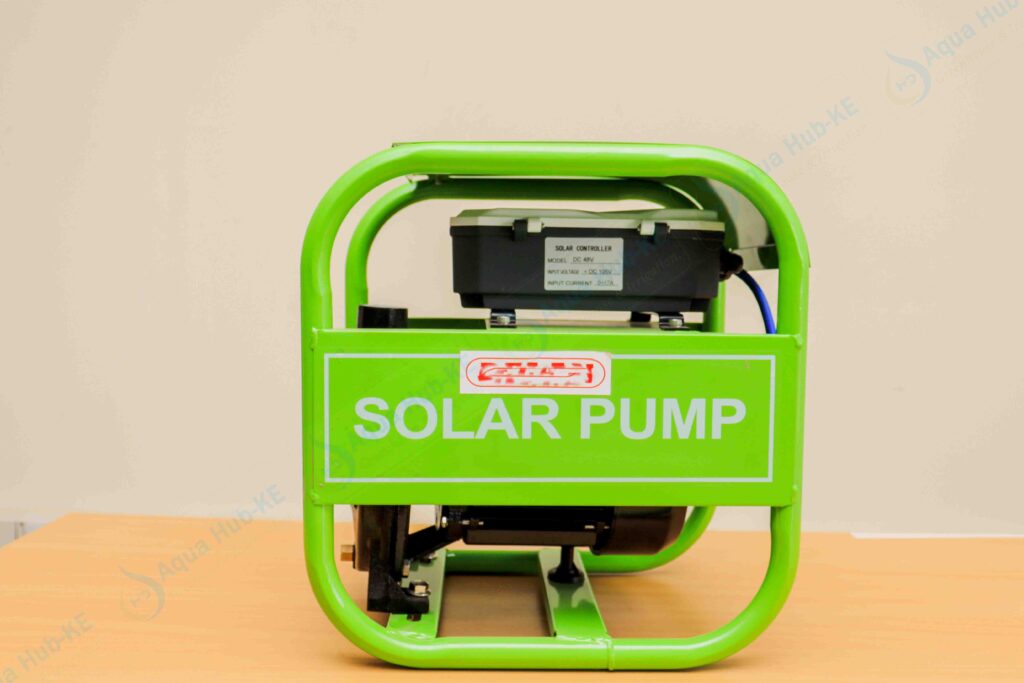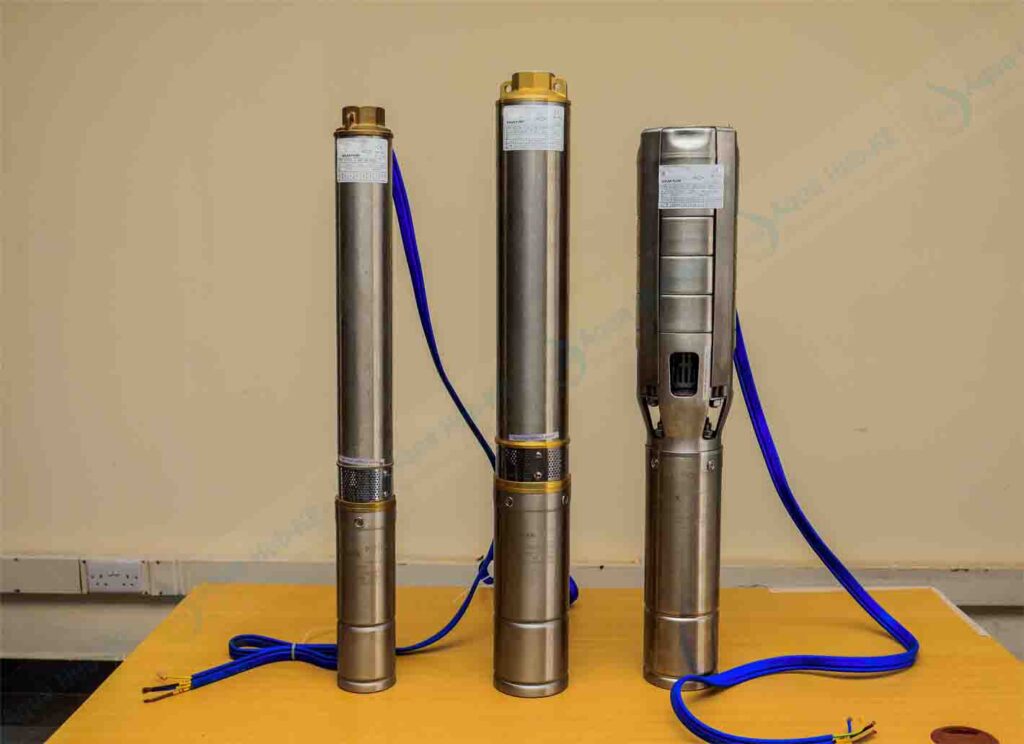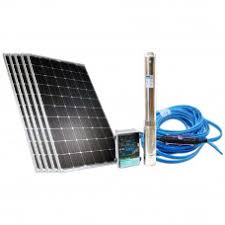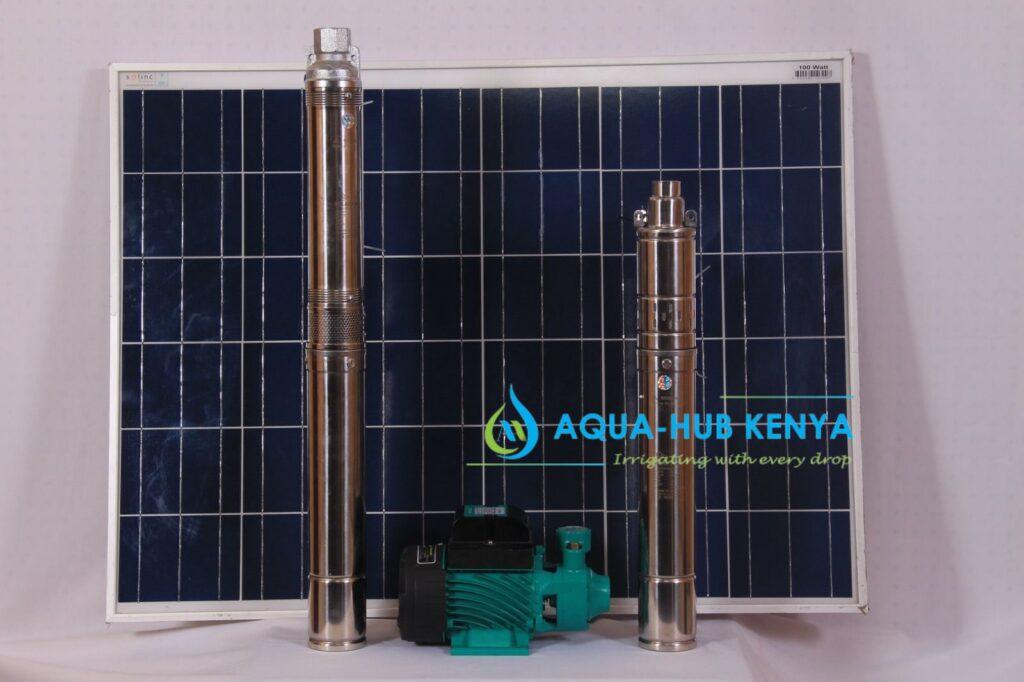Blog
Solar Pump for Irrigation in Kenya
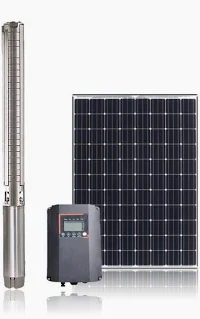
Solar water pumps for irrigation in Kenya sold by Aqua Hub LTD are the top models designed for different irrigation applications. They vary in pressure rate, size, and flow rate with high volumes of supply which is best for farm irrigation activities.
We are a well known and convenient solar pump system suppliers in Kenya. Our solar pumps include top brands such as Pedrollo and Davis & Shirtliff pumps. Engaging with us will help you access installation services done by our certified technicians. You are now at your destination, ready to be assisted.
Call 0790719020
Why are Solar Pumps Recommended for Irrigation in Kenya?
Kenya faces a crisis of climate change which affects agriculture, access to clean water and economic stability. Solar pump systems are among the current sustainable solutions to water shortage which is a threat to agriculture.
People are shifting to irrigation farming and embracing the use of solar pumps to source water for watering plants. By implementing solar energy and ditching gasoline, electric or mechanical pumps, they end up cutting production costs. Solar pumps are found to be reliable, durable, strong, this limits the risk of loss and time taken to irrigate crops. These water pumps are dependent on renewable and carbon free energy which is safe for environmental use.
Cost of Solar Pumps in Kenya
|
Outlet Size (inch) |
Voltage (DC) |
Prices |
|
½ |
12 V |
58,000 |
|
¾ |
24 V |
77,000 |
|
1 |
48 V |
86,000 |
|
1¼ |
72 V |
95,000 |
|
1½ |
90 V |
110,000 |
|
2 |
110 v |
125,000 |
Which Irrigation Systems require a Solar Irrigation Pump?
Drip irrigation – Solar Pumps can be used to draw water for irrigation supply through drip irrigation. In this case solar pumps will help you lower the cost of water supply to the farm. You will require to set up a tank for storing water near the farm and drip irrigation kits.
Sprinkler irrigation: Impact and micro sprinklers work through moderate pressure of water flow. To attain the moderate pressure of water supply, you need a surface solar pump. A surface solar pump can be connected to a dam or river and a hose pipe supplying it to the sprinkler head.
Rain Hose Irrigation: this method involves a rain pipe with nano punched hose that releases irrigation jets. It also works by connection to a pump and in case of a solar pump, it requires a mainline pipe of HDPE connected to the pump and then to the delivery rain pipe.
Requirements to Run a Solar Pump in Kenya
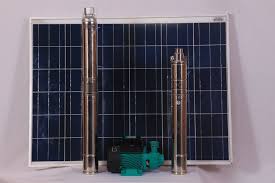
- Solar Panel (PV models) – contain Photovoltaic Cells that collect solar energy
- Electric Cable – to carry the electric energy from the solar panel to the pump.
- Inverter – converts the direct current to alternating current for safety of AC pump models
- Controller – ideal for submersible pumps. Automatically controls the pump and protects it from damage in case of dry runs
- Mounting structure – for mounting the solar panels on a suitable area.
Solar Pump for Sale in Kenya
Submersible Solar Pumps – Thin and narrow pumps designed to move water from boreholes. Because of their purpose, they work while completely immersed in water. They use solar energy to draw water and are either direct current (DC) or alternating current (AC) types.
Surface Solar Pumps – Solar pumps that work while mounted on the ground surface. They draw water from sources of less than 20 feet depth such as rivers, ponds, pools and dams. Requires a suction pipe and delivery pipes to carry water to distances of 30 Meters or more.
Benefits of Solar Pump for Irrigation in Kenya
- Solar pump technology enhances easier water supply for irrigation due to their reliability and robustness.
- It is cheaper to use solar power for irrigation because it totally relies on the renewable sun power. Other means such as diesel pumps, petrol and electric pumps are expensive.
- Lower maintenance is another plus for solar pumps. The solar pump system is designed with protected inverter, proper cable insulation and thus no damage, wear or tear.
- Sizing and selection of the solar pumps, panels and system components is accordance with the water requirements.
- The high durability of solar pump systems makes irrigation farming convenient and affordable. Solar pumps, panels and inverters can operate for decades when well maintained.
- Portable nature of surface solar pumps makes them easier for irrigation in one place and shifting them to use in another farm.
- Solar pumps can work anywhere, especially rural areas where electricity may be a problem.
What to Consider When Looking for a Solar Pump for Irrigation
Flow Rate: the volume of water a pump can push per unit time is a basis on whether it is reliable for irrigation of various plants.
Head: the distance at which a pump can move water also determines suitability to your application.
Suction Height: consider the depth of the water and the maximum suction height of the pump to ensure it can draw water effectively.
Water source: are you getting water from the river, borehole, dam or pool?
Pressure rating: the pressure rating of the pump is among the main considerations as it decides which pump to choose for either low pressure or high-pressure irrigation requirements.
Connection Pipes: The size and length of your pipes can affect the flow rate due to backpressure. Ensure you use appropriately sized pipes for maximum efficiency.
Batteries: While many solar pumps run directly from the panels, a battery bank can provide water during cloudy days or at night. This adds to the upfront cost but offers greater flexibility.
Durability and maintenance: Look for pumps made with robust materials that can withstand continuous operation and consider the availability of spare parts.
Maintenance: Solar pumps generally have low maintenance, but regular cleaning of panels is important.
Cost: The upfront cost of solar pumps can be higher than traditional alternatives but remember to factor in the long-term savings from zero fuel or electricity bills and lower maintenance.
How to Prepare and Install Solar Pump Systems for Irrigation
1st Step: Site Assessment & Water Needs Analysis
- Water Source: Is it a borehole, well, river, or pond? You’ll need to know the depth (for submersible pumps) or distance from the surface (for surface pumps).
- Water Requirements: How much water do you need daily? This depends on your irrigation area, crop type, and desired irrigation method (drip, sprinkler, flood).
- Sunlight Availability: Observe your chosen site for direct sunlight throughout the day. Are there any trees or buildings that will cause shading? The more unobstructed sun, the better.
- Location: Identify a secure, easily accessible, and well-ventilated spot for your pump controller and solar panels.
2nd Step: System Sizing & Component Selection
- Pump Type and Size: Select a pump (submersible or surface) that matches your water source depth and required flow rate and pressure. The pump’s wattage and head are key specifications.
- Solar Panels: Determine the number and watts of solar panels needed to power your pump. Generally, you’ll want 30-50% more panel wattage than the pumps to ensure efficient operation even on slightly cloudy days. Consider voltage compatibility between the panels and the pump controller.
- Pump Controller/Inverter: This essential component regulates power from the panels to the pump, optimizing performance and protecting the pump from voltage fluctuations.
- Piping: Choose the correct diameter and material for your pipes to minimize pressure loss and ensure efficient water delivery.
- Storage Tank (Optional): While not always essential, a water storage tank can provide water during cloudy periods or at night, reducing reliance on batteries. If opting for battery storage, size it to your needs.
- Mounting Structure: A sturdy, corrosion-resistant structure to securely mount your solar panels at the optimal tilt angle for your location (in Kenya, usually facing North with a tilt).
3rd Step: Installation
Consider professional installation of solar water pumps by Aqua Hub LTD. We help mount the solar panel, inverter, controller and pump.
Steps for installation of the Solar Pump System
- Panel Mounting: Securely install solar panels on the chosen structure, ensuring proper orientation and tilt for maximum sun exposure. Avoid any shading.
- Pump Installation:
- Submersible: Carefully lower the pump into the borehole or well, securing the power cable and piping.
- Surface: Place the pump near the water source and connect the suction and discharge pipes.
- Electrical Connections: Connect the solar panels to the inverter, and then the controller to the pump. All wiring must be secure, insulated, and correctly sized for the current.
- Plumbing Connections: Connect the pump’s discharge pipe to your irrigation system or storage tank, ensuring leak-free joints.
- Grounding: Install proper earthing for safety.
- Sensors : Install water level sensors in the borehole/well to prevent dry running and in the storage tank to prevent overflow.
4th Step: Testing & Maintenance
- System Test: Once installed, thoroughly test the system to ensure it’s pumping water efficiently and all components are functioning correctly.
- Regular Maintenance: Keep solar panels clean from dust and debris, check for loose connections, and periodically inspect the pump for blockages or wear.

